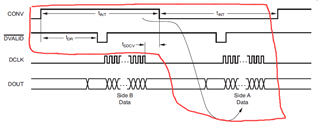Hi TI EXPERT ,
My client just need one time integration and retrieval when they want it. so i toggle twice CONV,get the Side B Data,and keep CONV low waiting for next integration and retrieval,is it OK? Or i should toggle three times CONV and keep CONV high? And what should i notice?
Thanks for your suggesttions !


